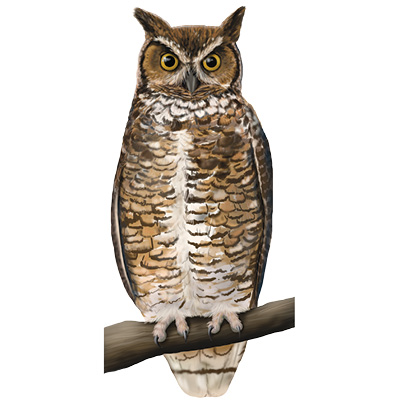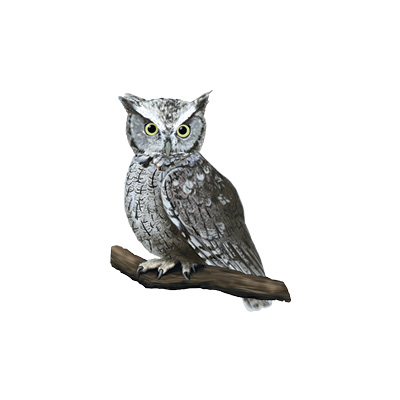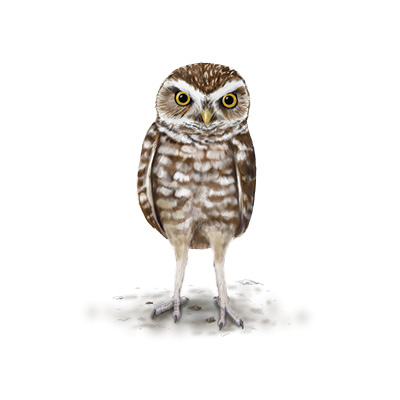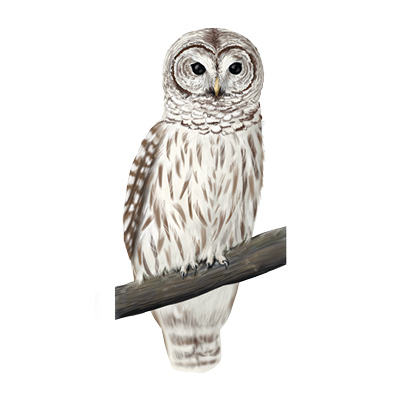Owls About Texas
ILLUSTRATIONS Samantha N. Peters

GREAT HORNED OWL
Bubo virginianus
Tall ear tufts or “horns”
Yellow eyes surrounded by copper-brown facial discs
Sounds like: A deep “Who who-whoo, who-who?”
Look for them: In young woodlands adjacent to open areas, but habitat varies widely
We’ve had a pair (Athena and her mate) nest at the Center for more than a decade! Learn more here.

EASTERN SCREECH-OWL
Megascops asio
Pale greenish bill, yellow eyes
Small ear tufts can be upright or flat
Sounds like: A whinnying sound like a high-pitched horse
Look for them: In various woodlands — preferably near water

BURROWING OWL
Athene cunicularia
Rounded heads and notably long legs
Large yellow eyes and bold white eyebrows
Sounds like: A variety of clucks, screams and rattles; cooing during mating season
Look for them: Perching on the ground in open habitats during daylight

BARRED OWL
Strix varia
Round head, yellow beak and dark eyes surrounded by ripples
Prominent horizontal bars on upper breast
Sounds like: “Who cooks for you; who cooks for you all?”
Look for them: In forests near swamps or rivers
Special thanks to Travis Audubon volunteer Jane Tillman; this article also heavily referenced allaboutbirds.org.

